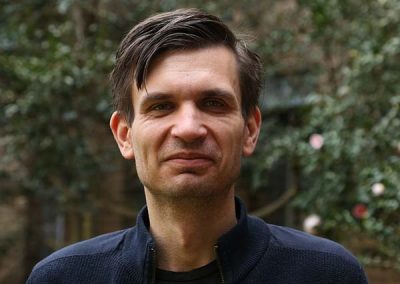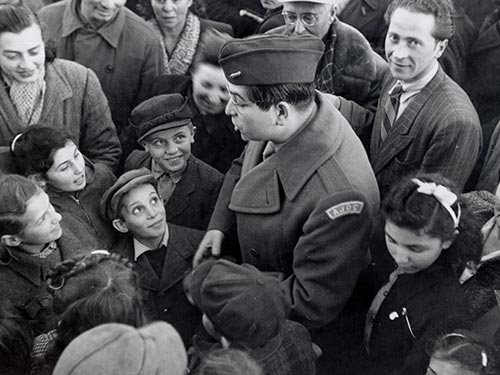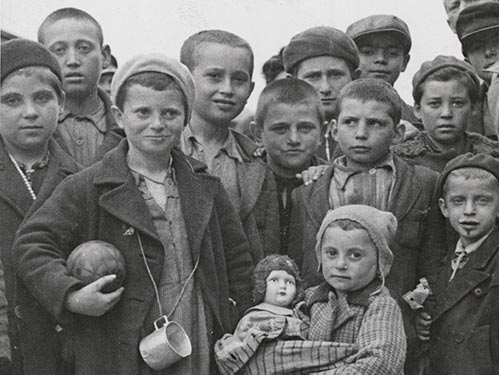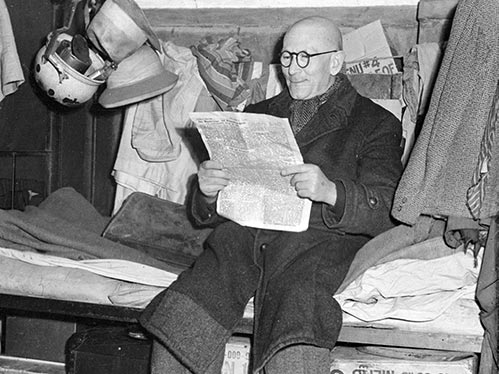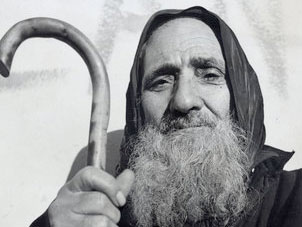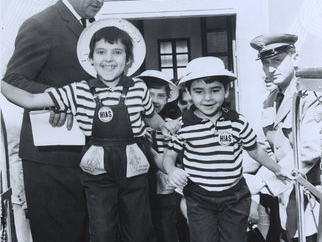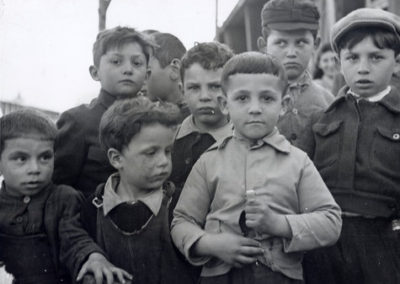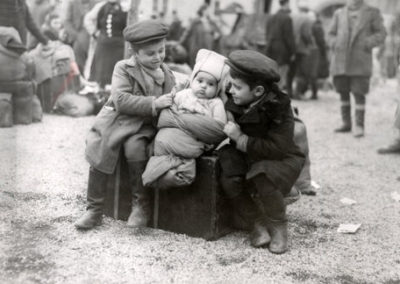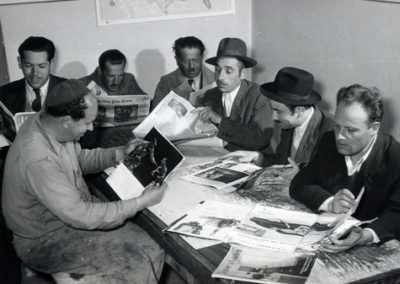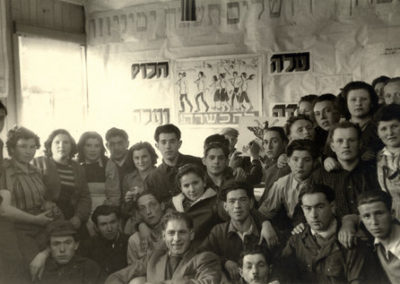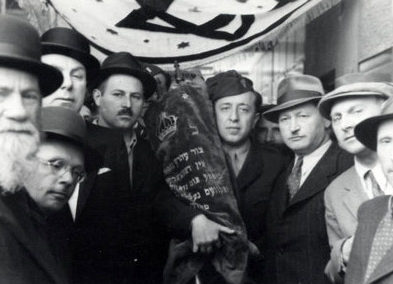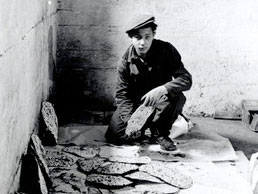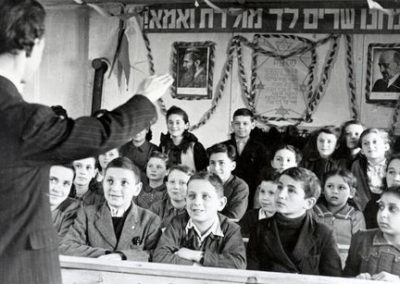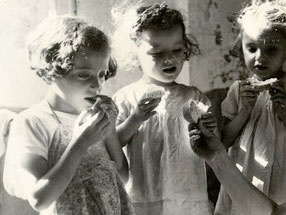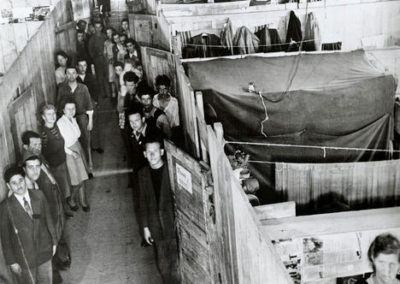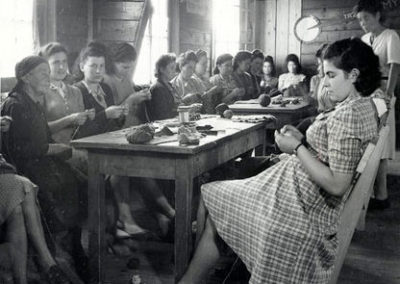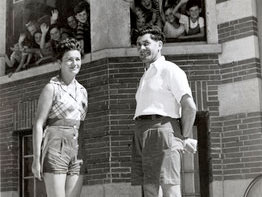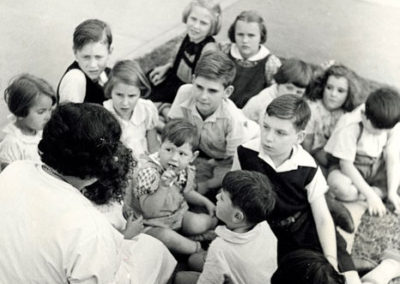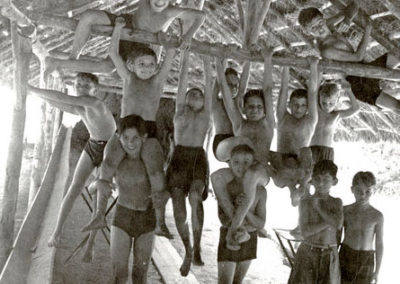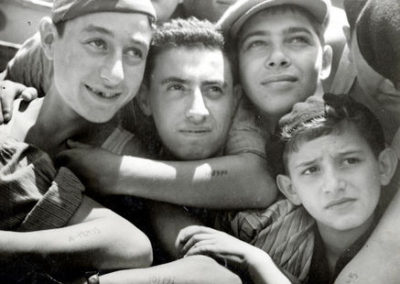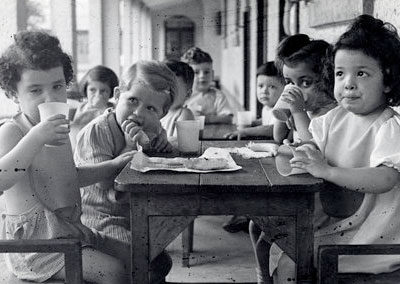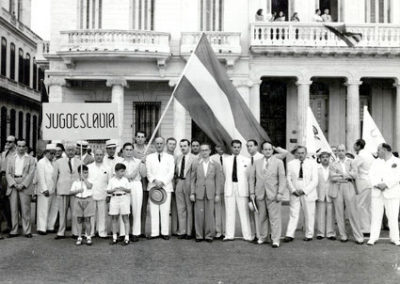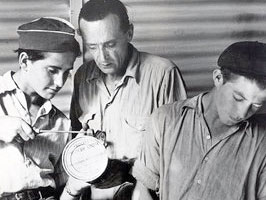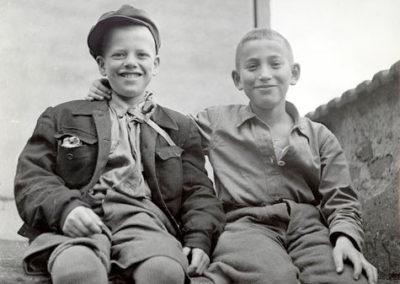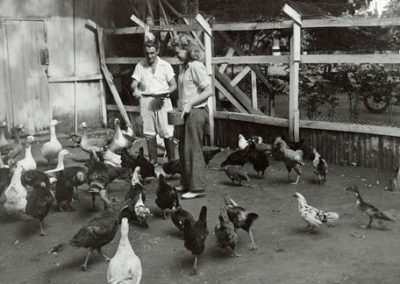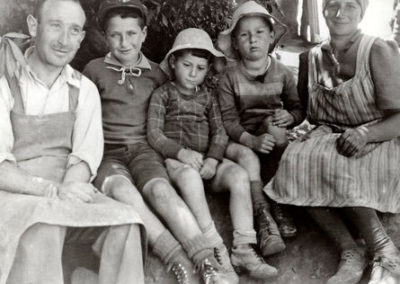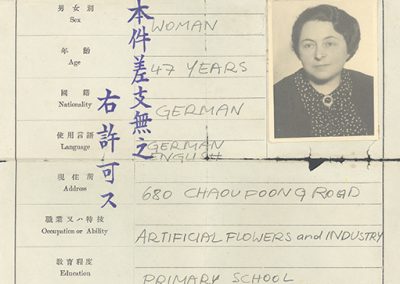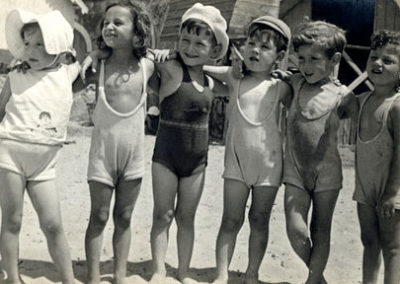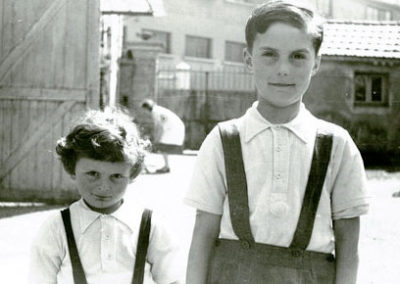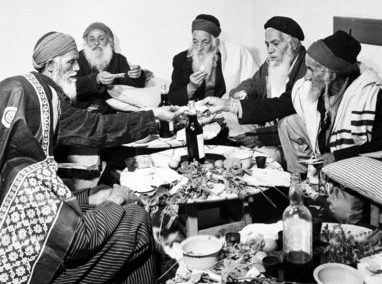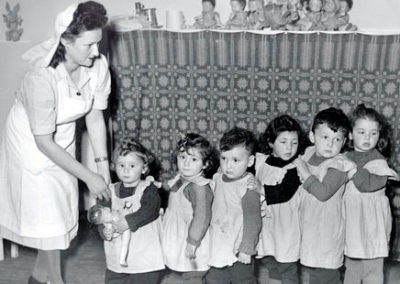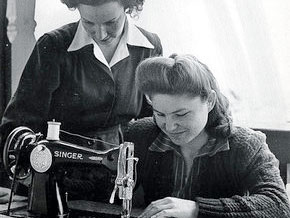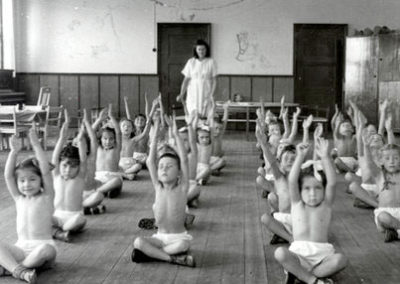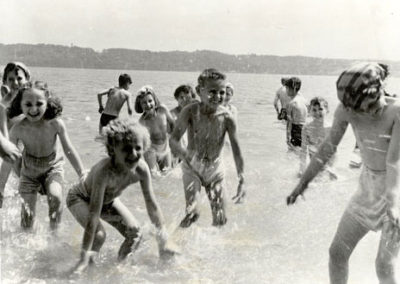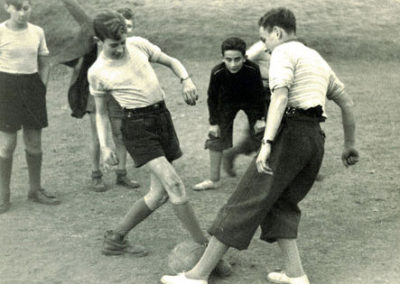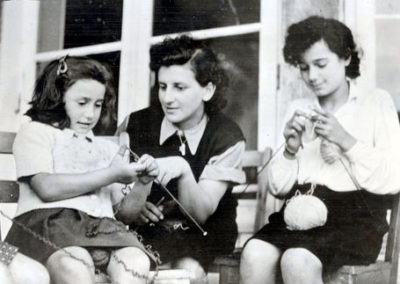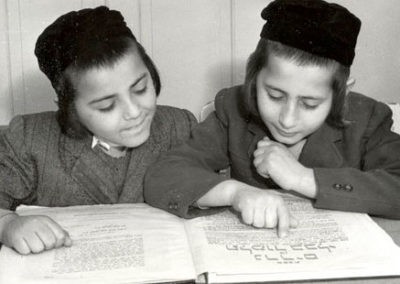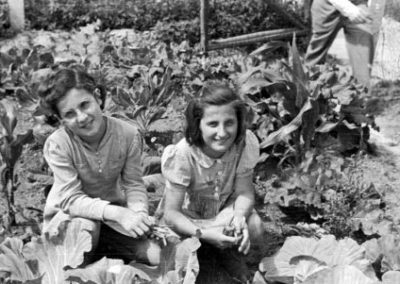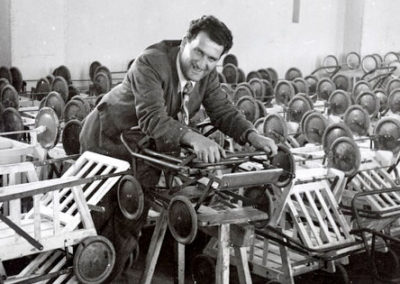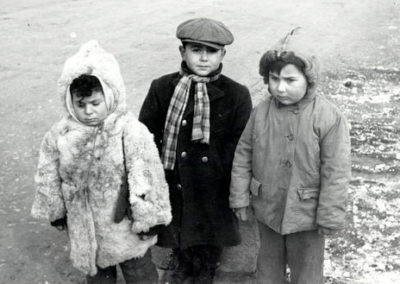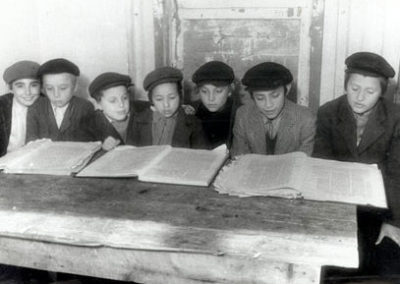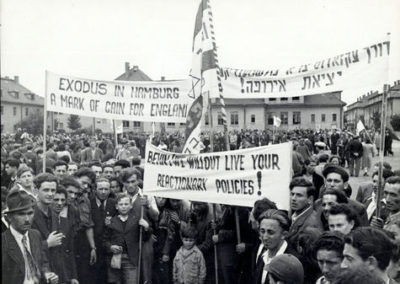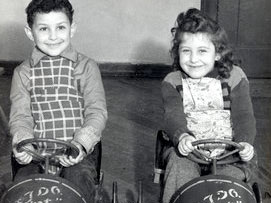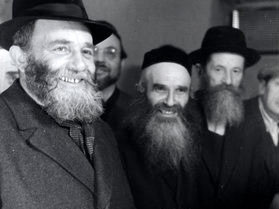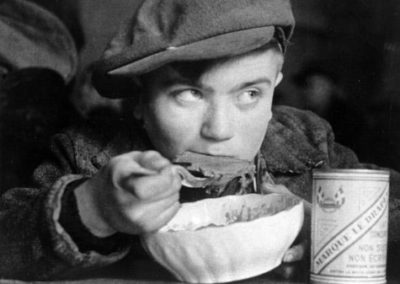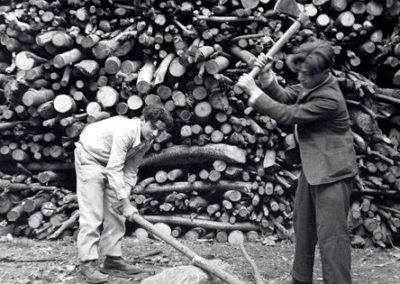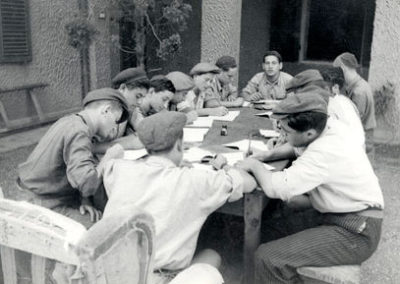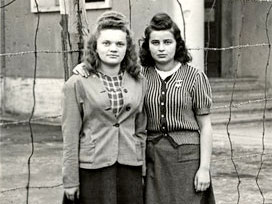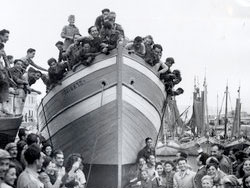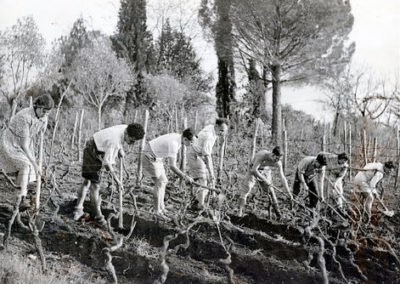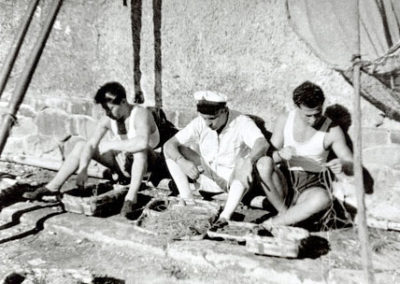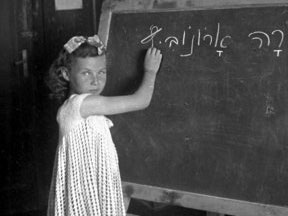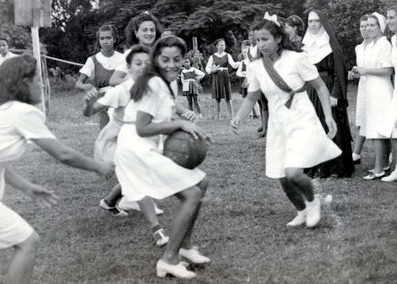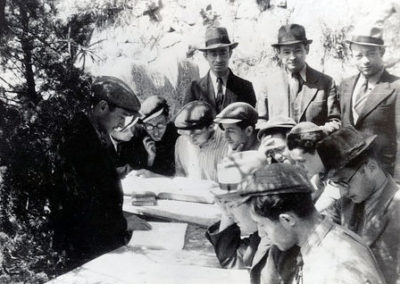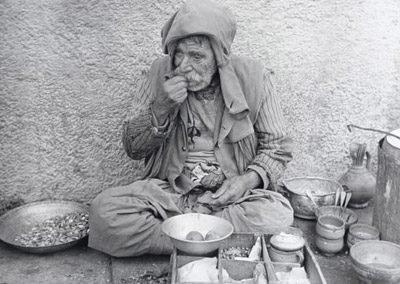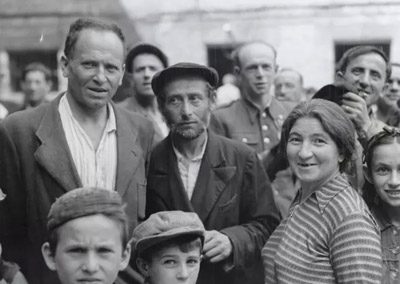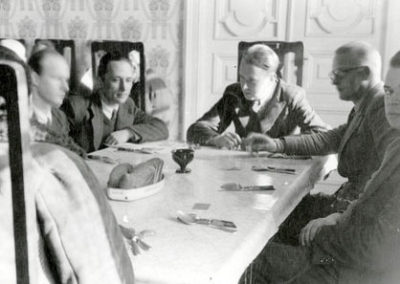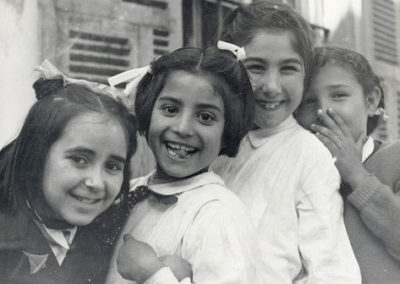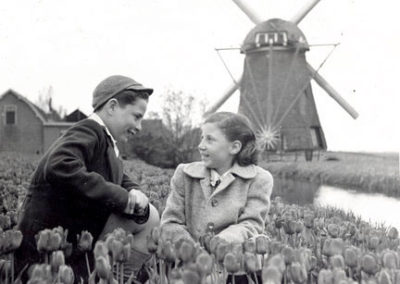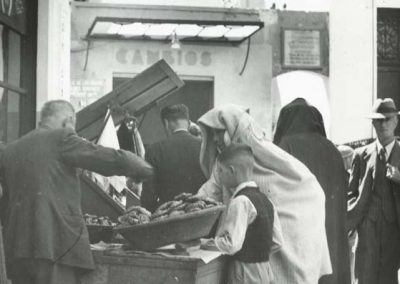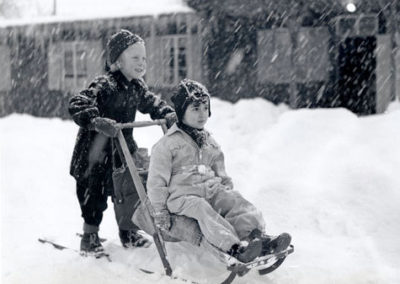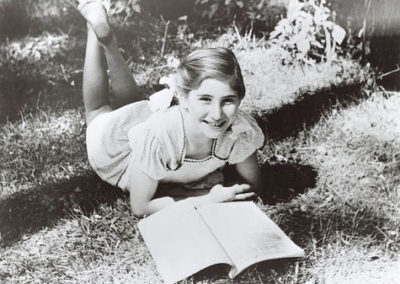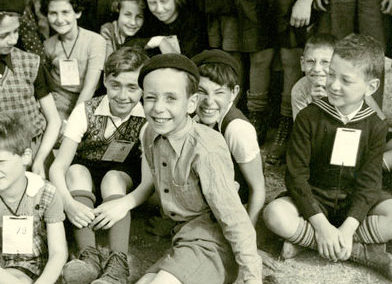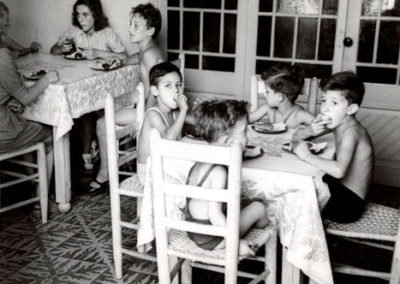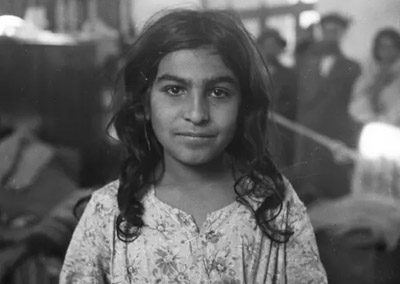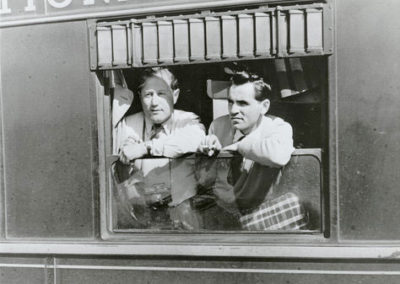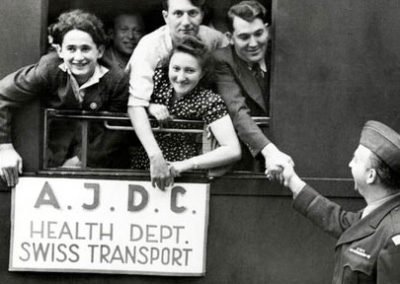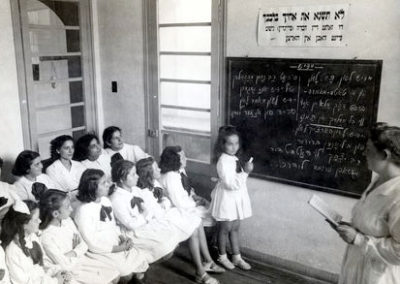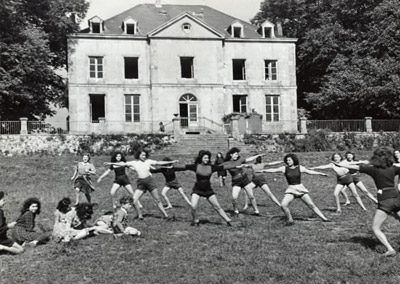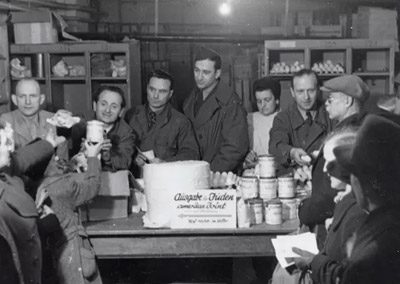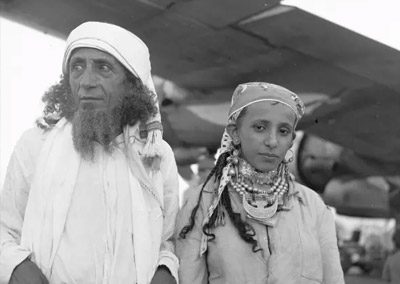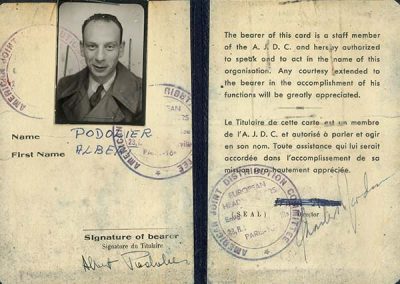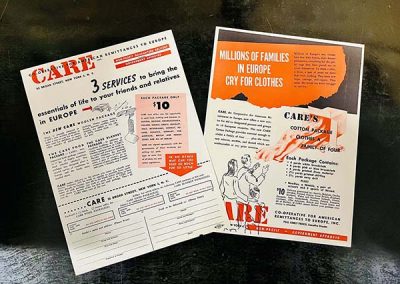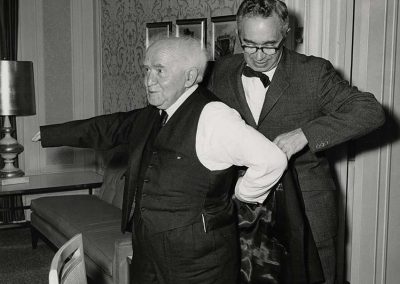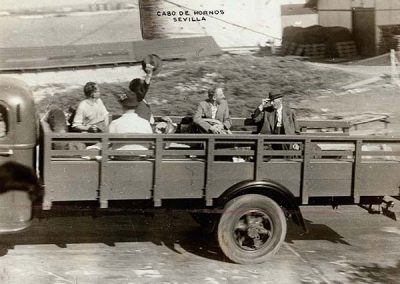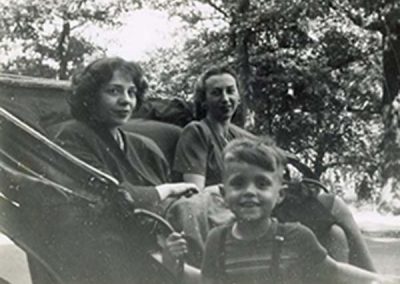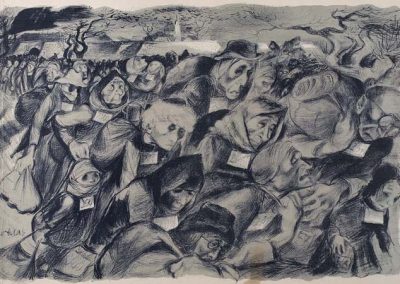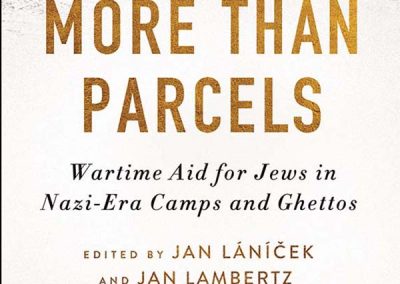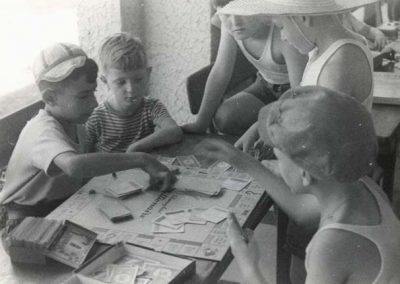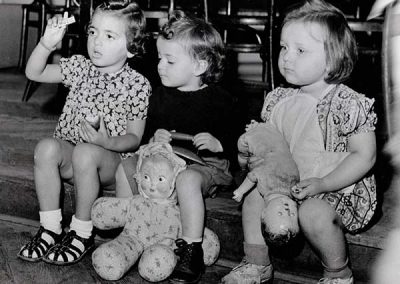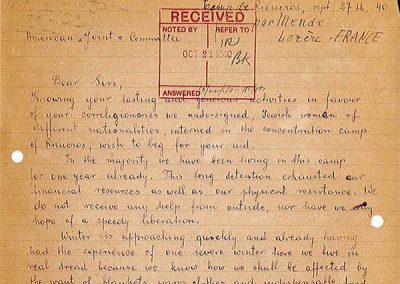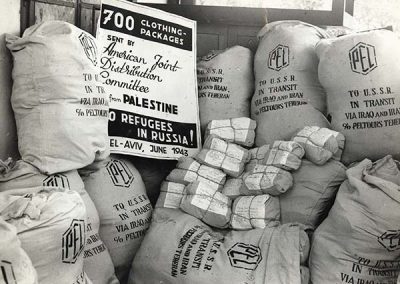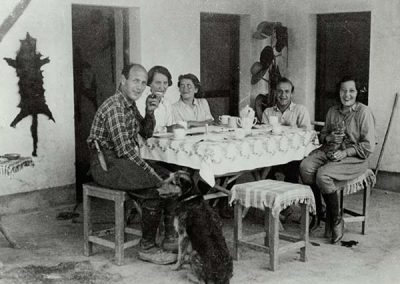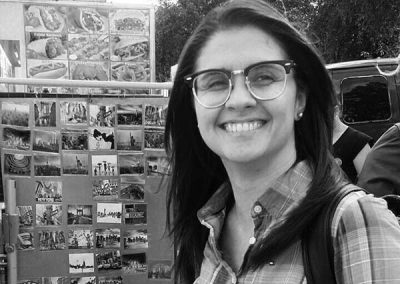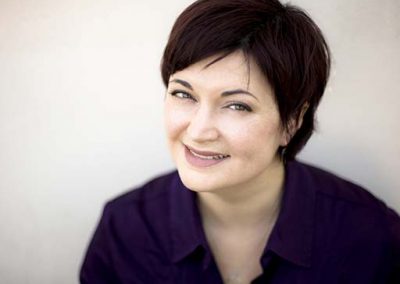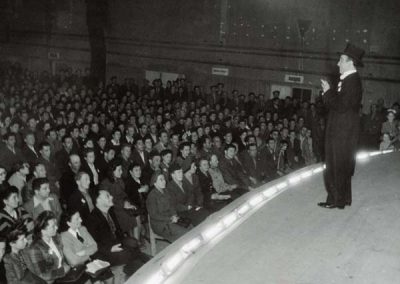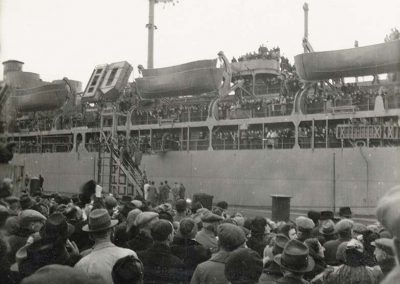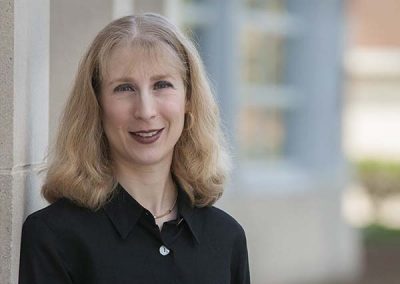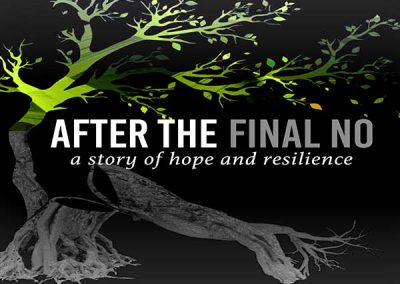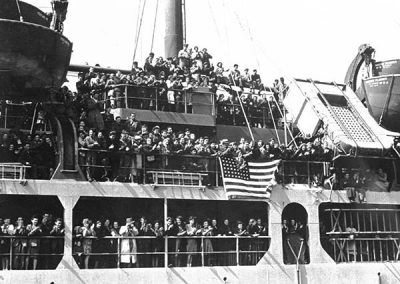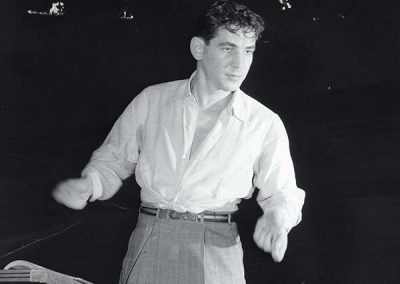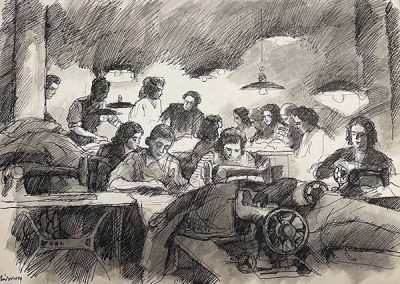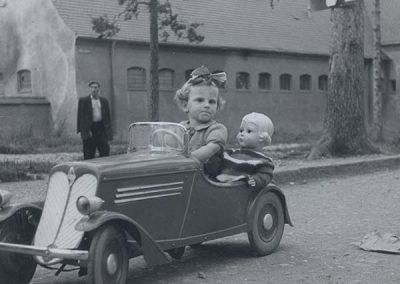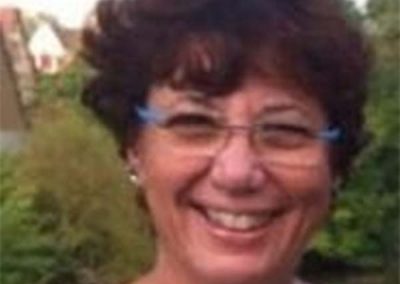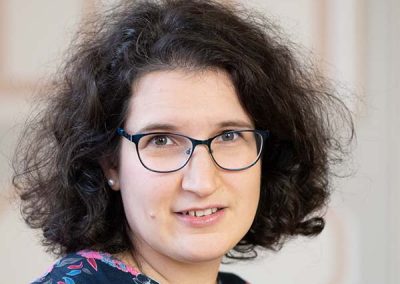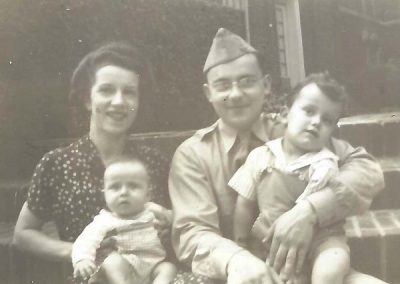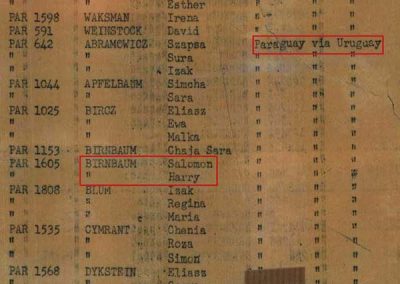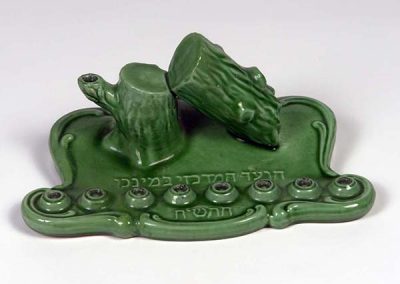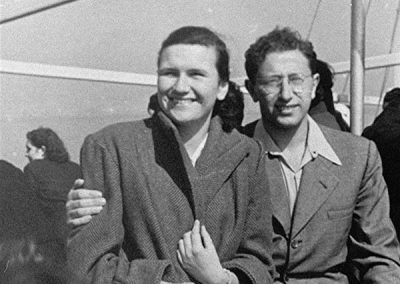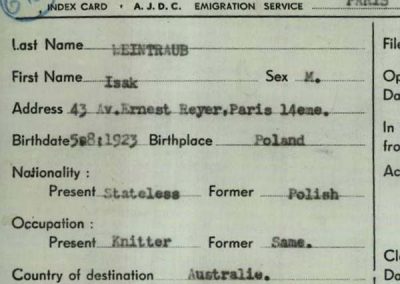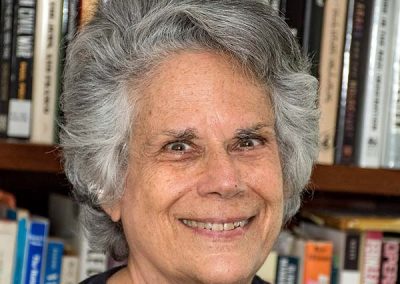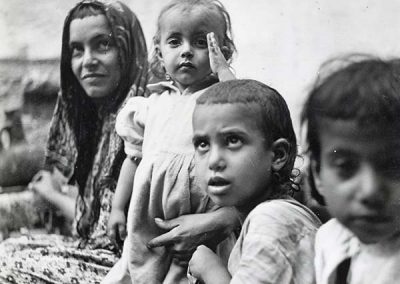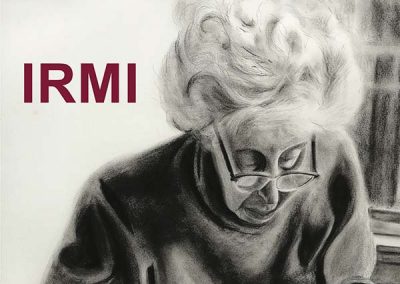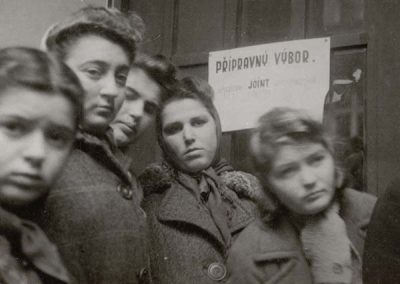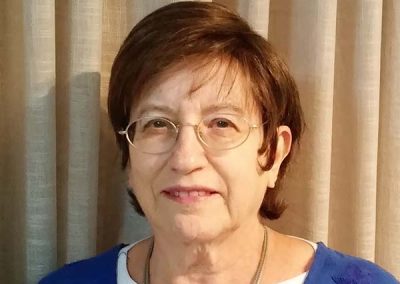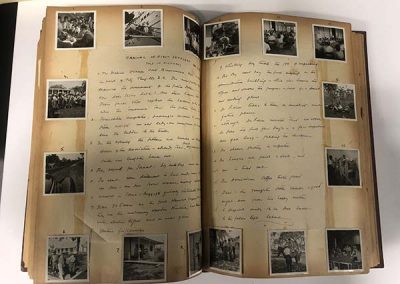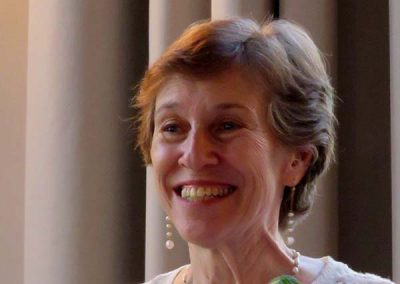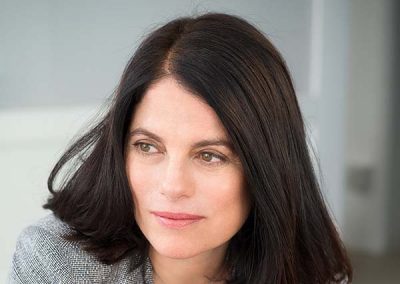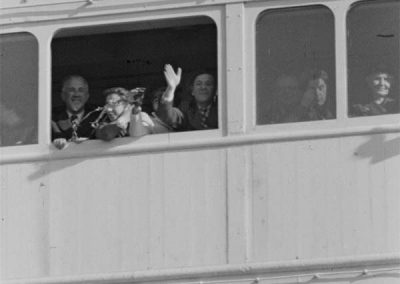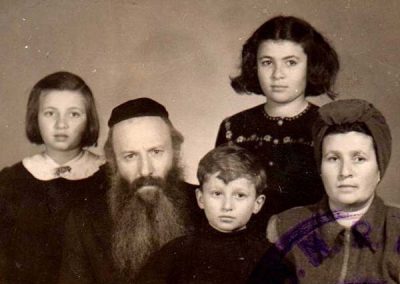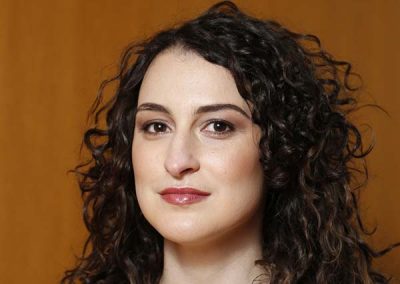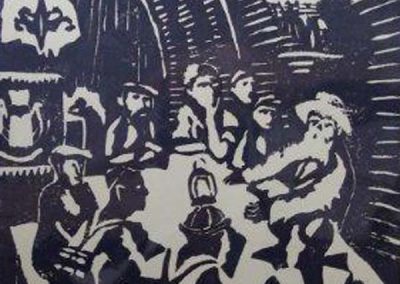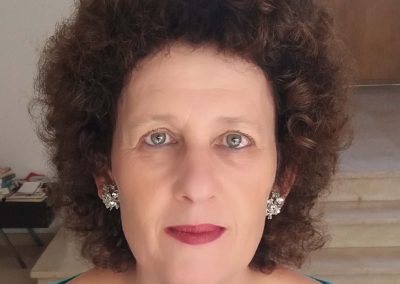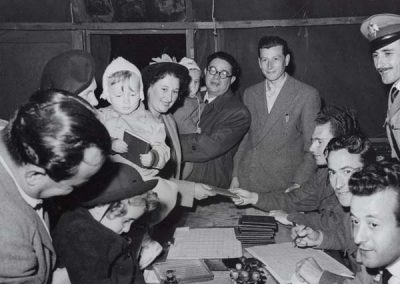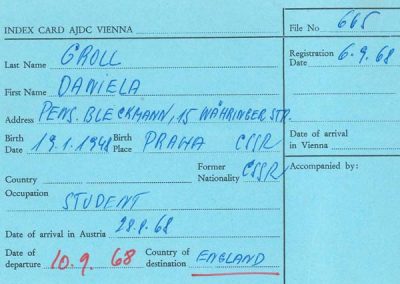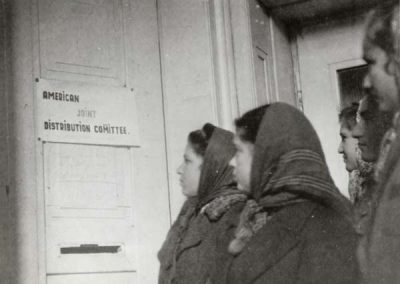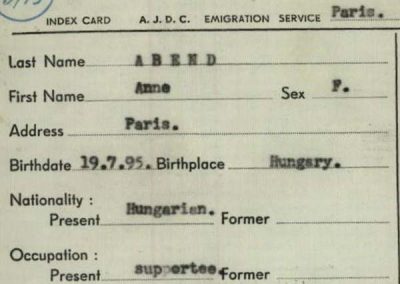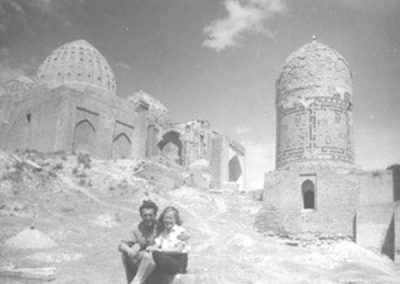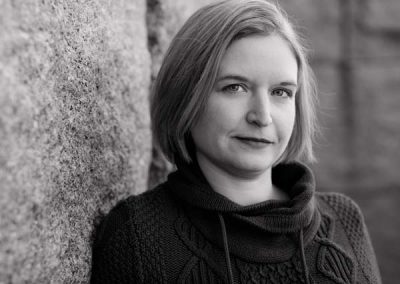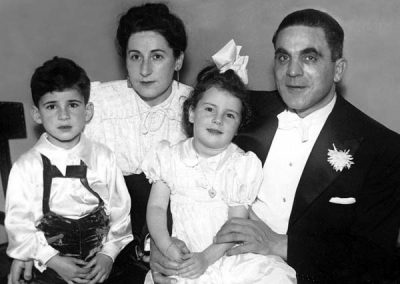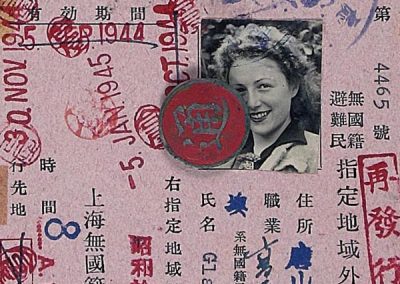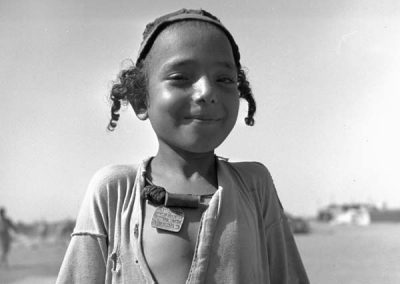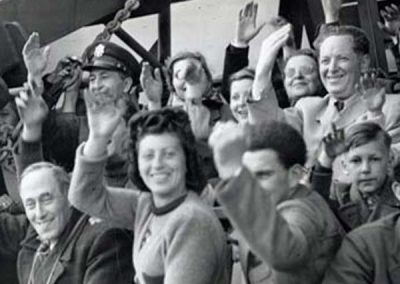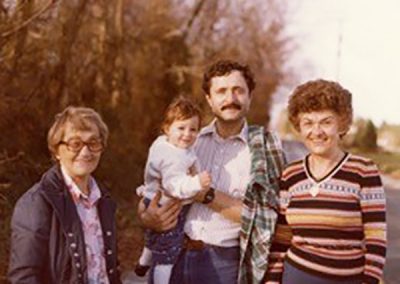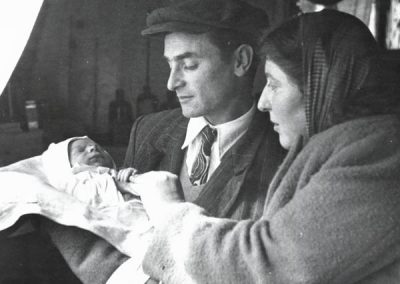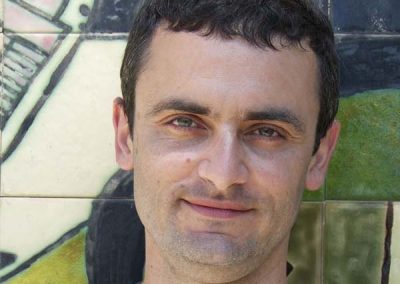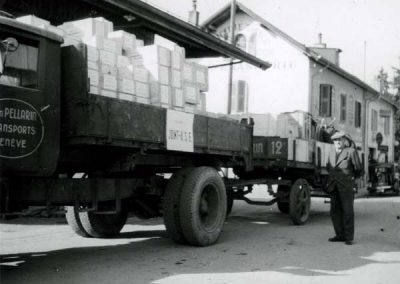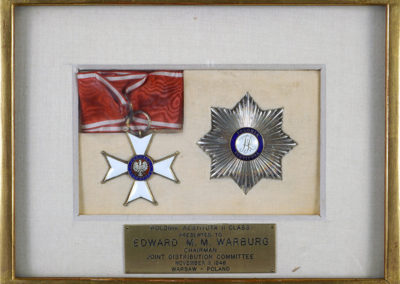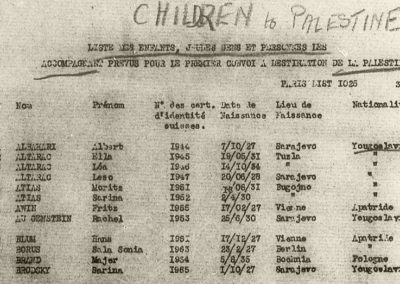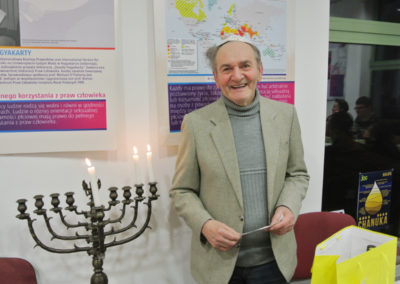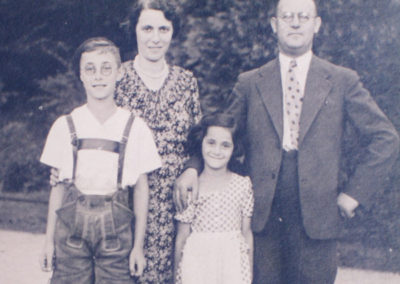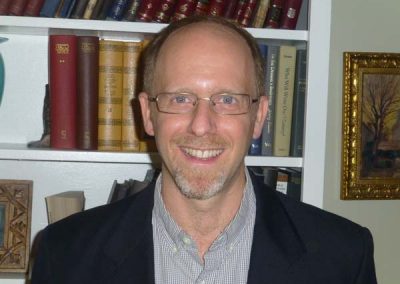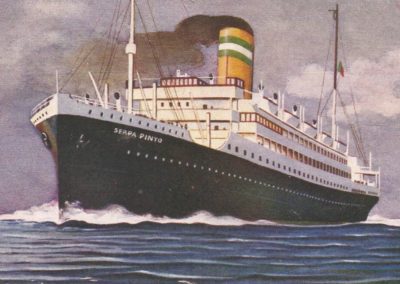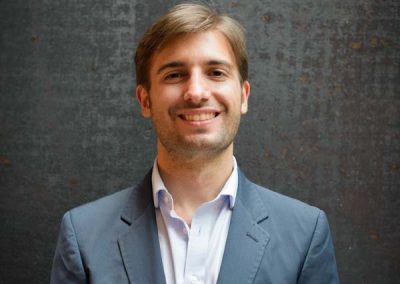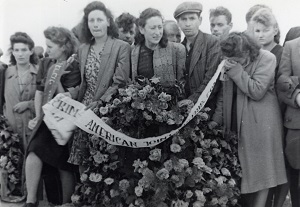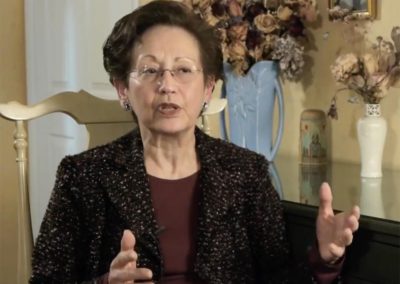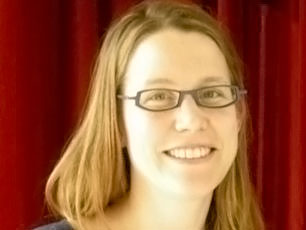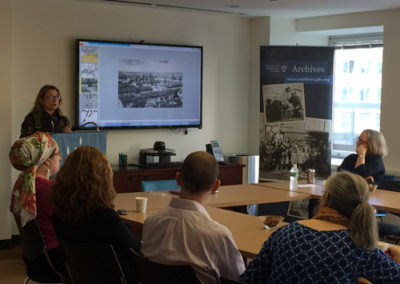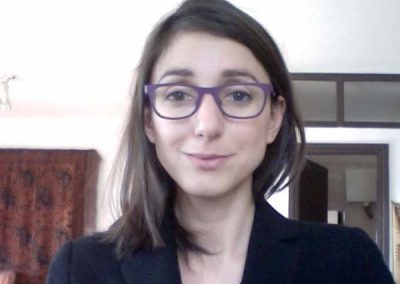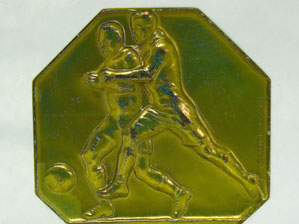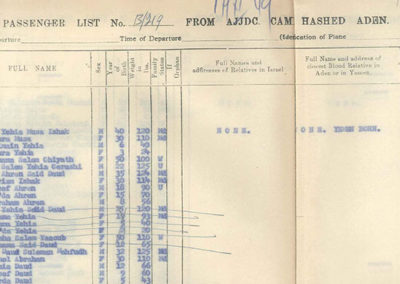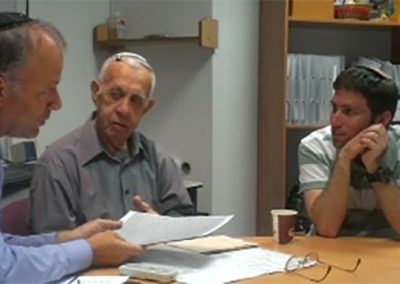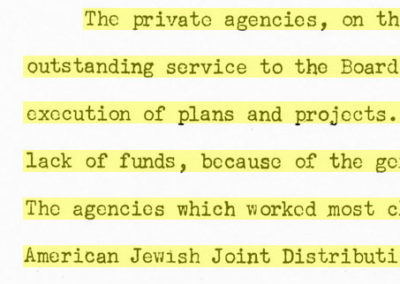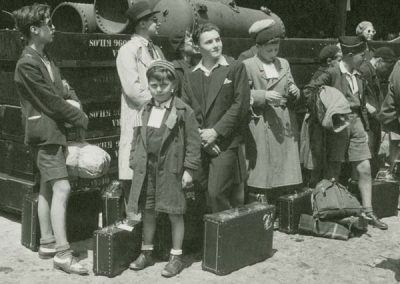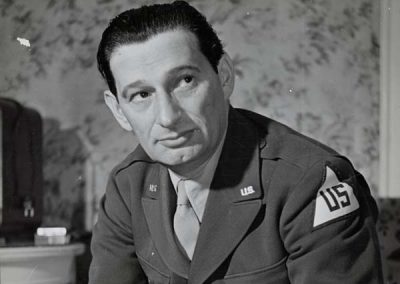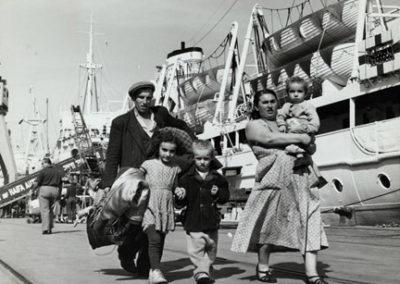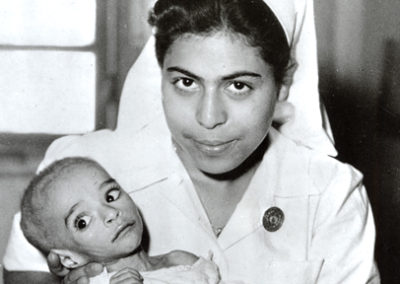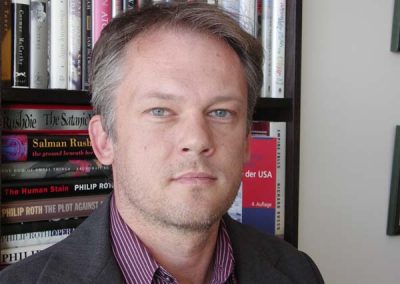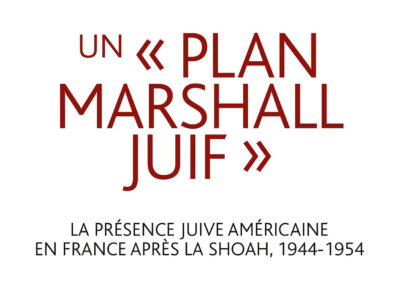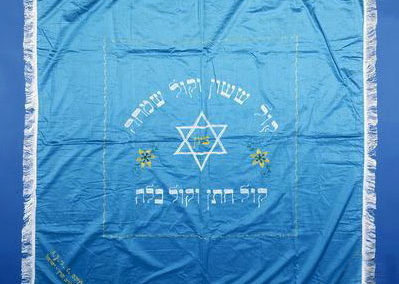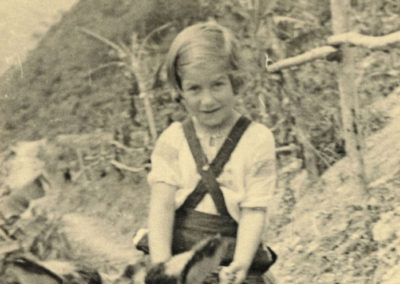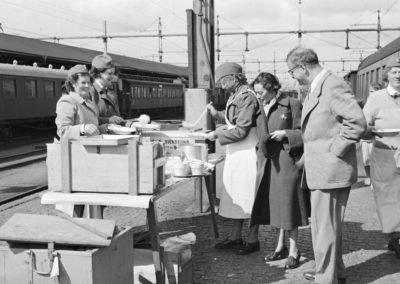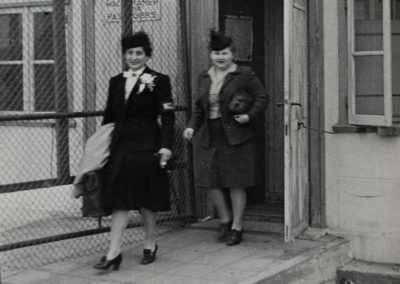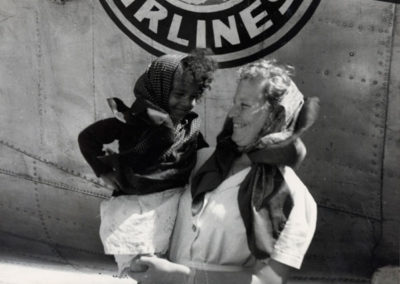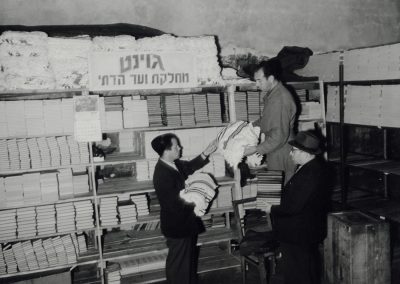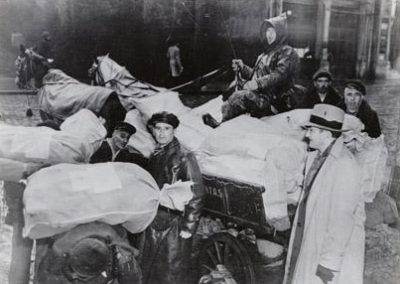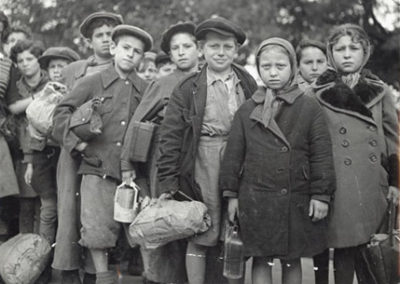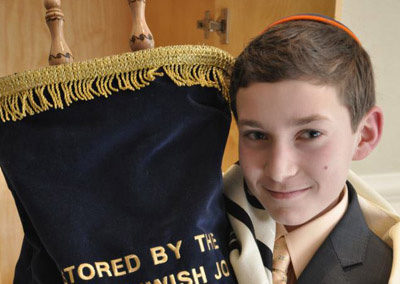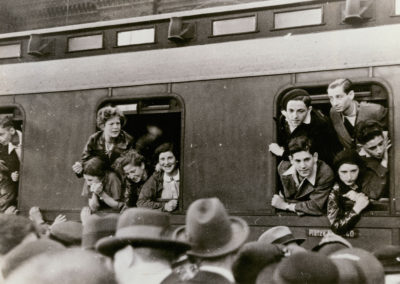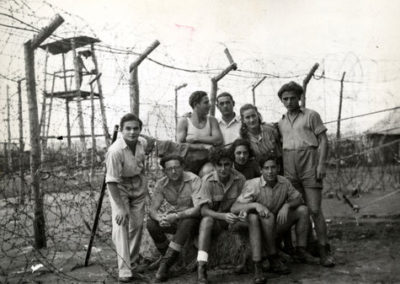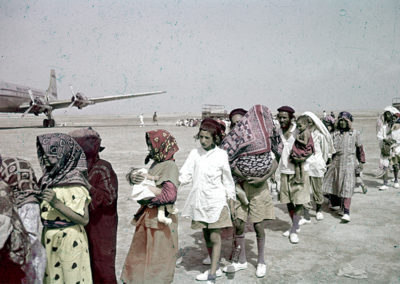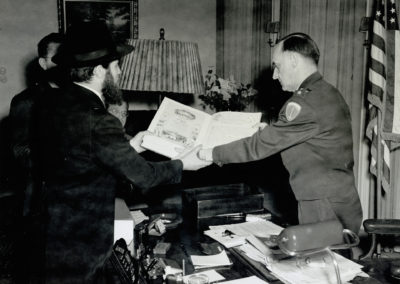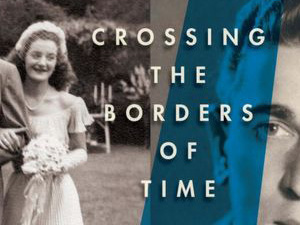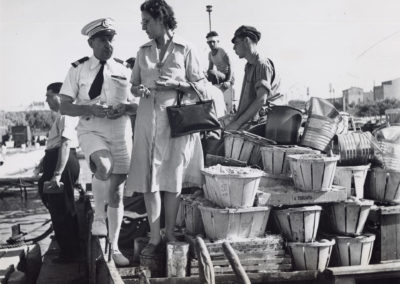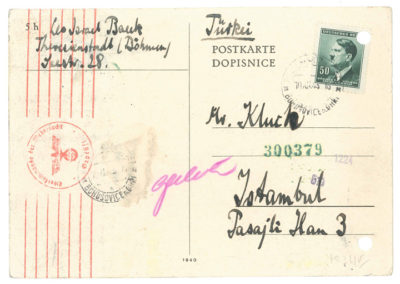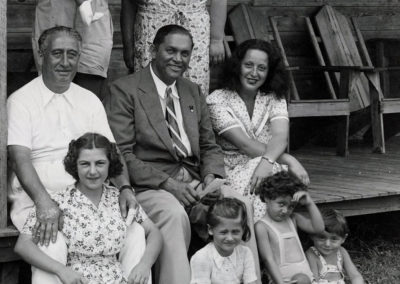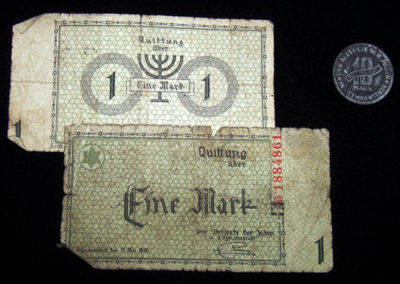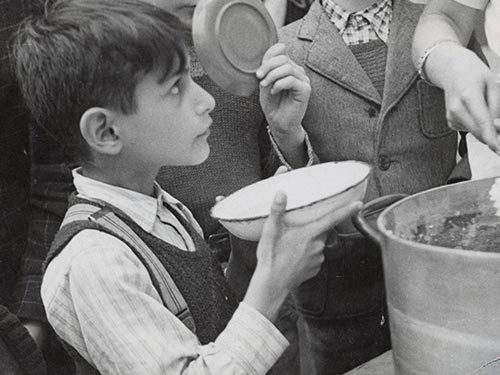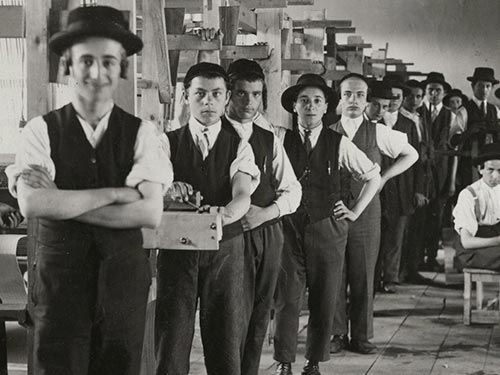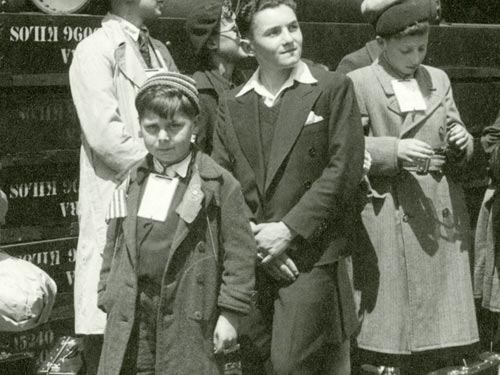JDC in the 1940s
Jewish refugees from Poland line the streets outside the emergency reception center in Nachod.
Czechoslovakia, c. August, 1946.
Jewish refugees from Poland line the streets outside the emergency reception center in Nachod.
Czechoslovakia, c. August, 1946.
As World War II ended, JDC marshaled its forces to meet a crisis of staggering proportions for world Jewry. Its vast relief and rehabilitation programs served hundreds of thousands of Holocaust survivors worldwide, whether in Displaced Persons camps in Europe or forming the first waves of immigration to the new State of Israel. In Israel, JDC formed a unique partnership with the fledgling government to develop social service policies and institutions.
In Depth
After the Holocaust—Rebuilding Jewish Lives and Jewish Life

Marriage ceremony of two Jewish refugees in Shanghai
JDC set up steam kitchens capable of feeding 10,000 a day and organized an extensive relief program that enabled many of the impoverished Shanghai Jewish community of 21,000 to survive the war.
Shanghai, 1941.
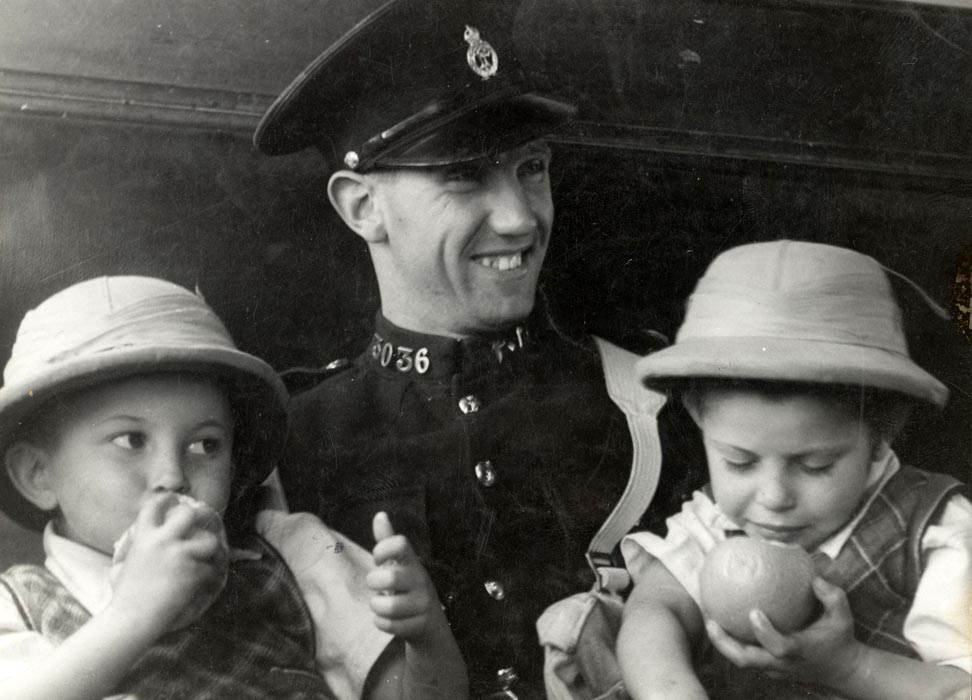
Polish orphans in the care of a constable, enjoying homegrown oranges in Palestine
With immigration certificates secured by Hadassah from the British Mandate and with transportation financed by JDC, some 1,000 orphaned Polish children, who had been evacuated from Siberia to Tehran, were finally allowed entry in Palestine.
Palestine, 1942.
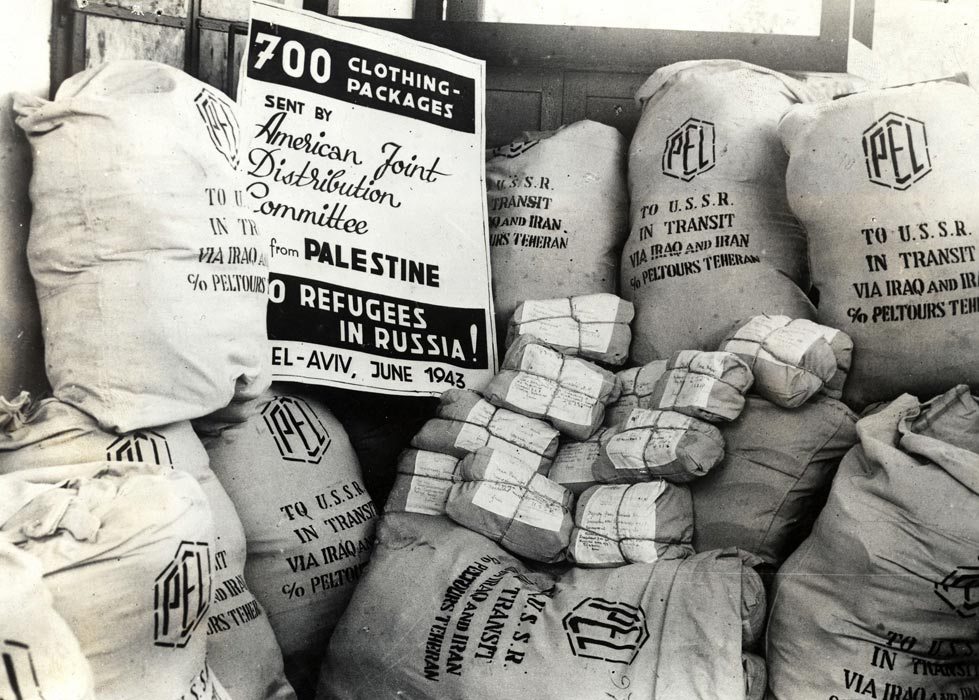
Packages of clothing from Palestine readied for shipment via Iran and Iraq to refugees in Soviet Russia
JDC’s extensive parcel service provided food and clothing – purchased in Palestine, Iran, India, and South Africa- for thousands of Polish Jews who had fled to Asiatic Russia during World War II.
Palestine, 1943. Photograph: “Rex” Tel Aviv.
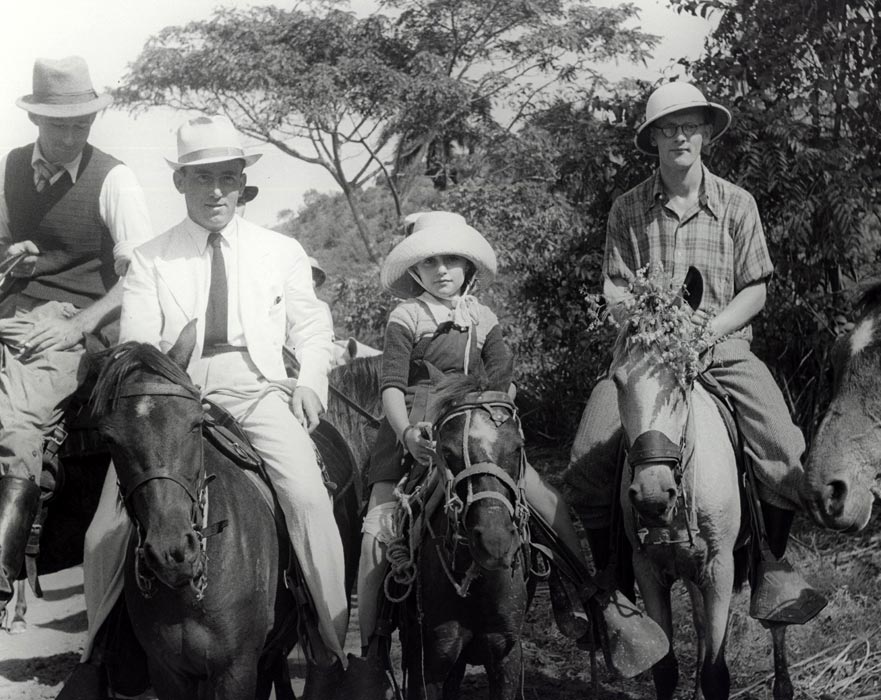
Jewish settlers at Sosua, in the Dominican Republic
In 1938, in response to the invitation of President Trujillo, JDC seized the opportunity to provide a safe haven in the Caribbean for Jewish refugees and established a unique agricultural settlement at Sosua under the auspices of JDC-funded Dominican Republic Settlement Association (DORSA).
Sosua, Dominican Republic, 1940s.
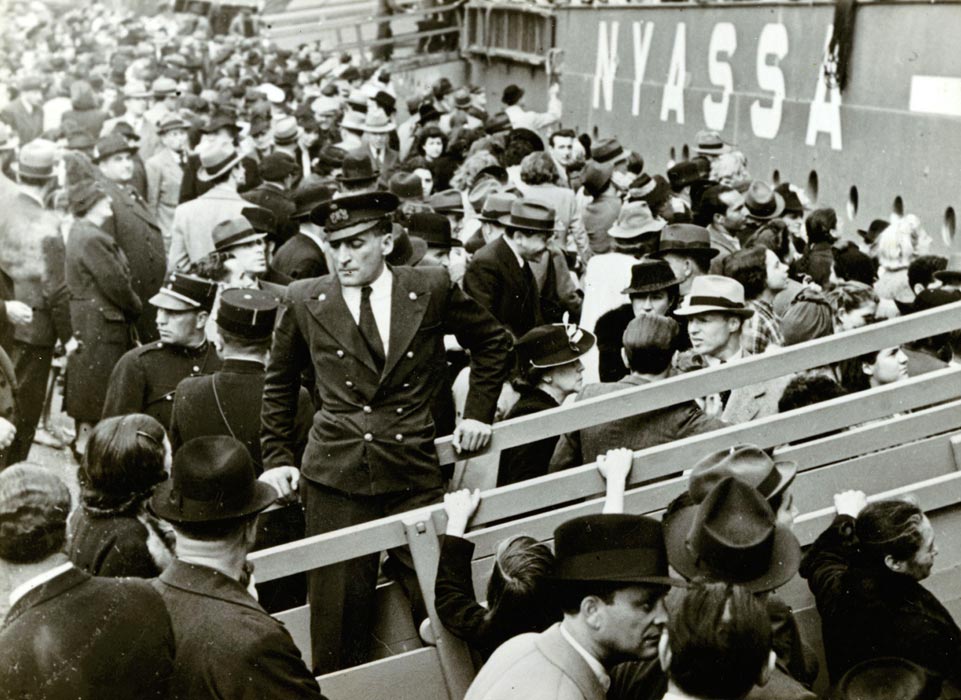
Passengers in Lisbon boarding the SS <em>Nyassa</em>, for a special JDC run that ferried almost 800 Jewish refugees to Palestine at a cost of almost half a million dollars
The Nyassa was one of the series of transatlantic vessels on which JDC, headquartered in Lisbon during most of the war, purchased blocks of passenger space for Jews seeking refuge in the Americas, in Palestine, and in other countries.
Lisbon, Portugal, 1944.
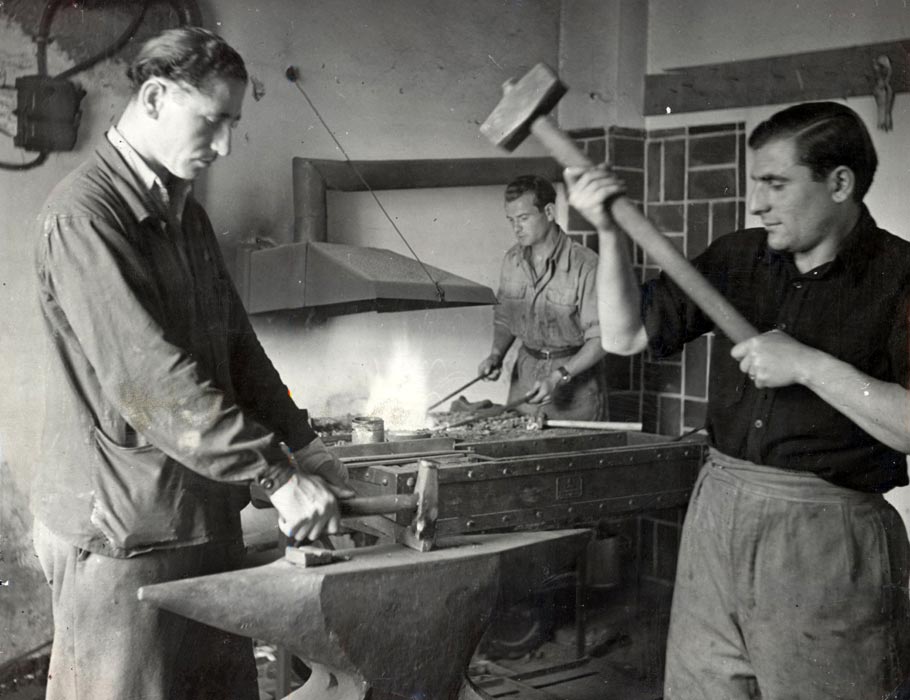
Two former inmates of the Bergen-Belsen concentration camp learning a new trade in the DP camp established at the same site
At Belsen-the largest DP camp in Germany until 1951- JDC worked closely with the survivors’ Central Committee and with UNRRA (the United Nations Relief and Rehabilitation Administration), the Jewish Agency, and other groups, such as ORT (the Organization for Rehabilitation and Training).
Bergen-Belsen, Germany, c.1946.
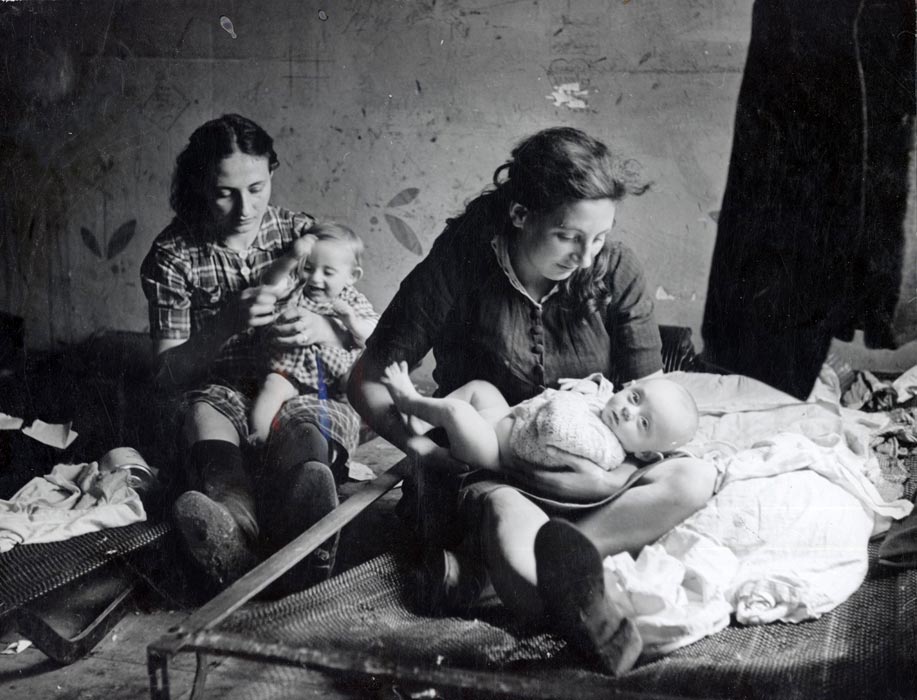
Polish Jewish mothers and children at a JDC-supported emergency transit center in Bratislava, Czechoslovakia, en route to the western occupation zones
JDC provided hot meals, medical care, clothing, and immigration counseling at a number of way stations for refugees fleeing from Poland, Romania, and Hungary after the pogrom in Kielce, Poland.
Bratislava, Czechoslovakia, 1946.
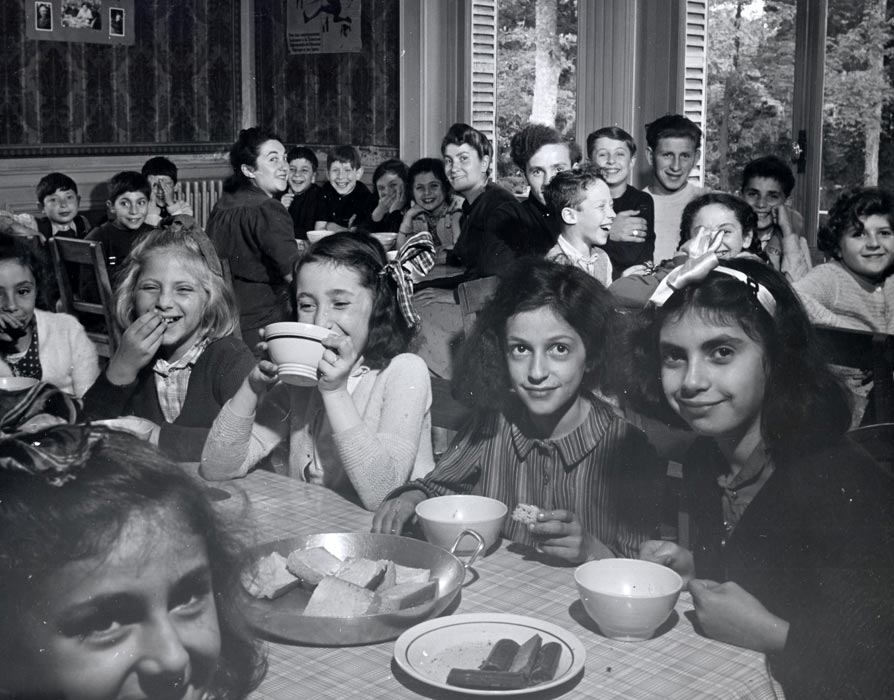
Children in a dining hall in a JDC-supported home in France
In 1947, JDC was helping 122,000 Jewish children in Europe out of a surviving 180,000, including some 25,000-mostly orphans-in more than 300 JDC-supported institutions.
France, c.1947.
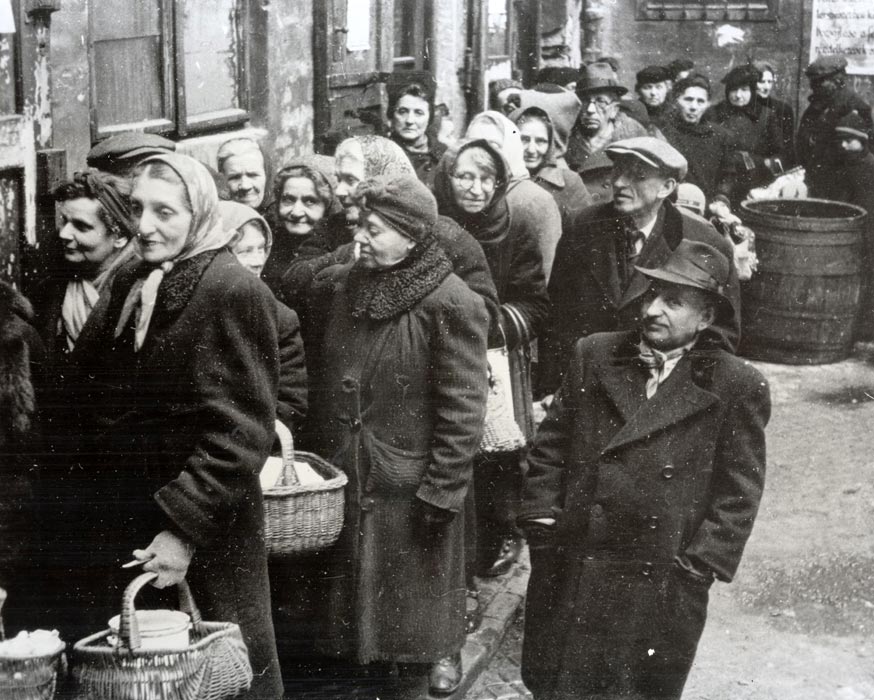
Waiting for aid at a JDC distribution center in Hungary
After the war, JDC assisted some 120,000 Jews in Hungary by subsidizing hundreds of institutions-including homes for the aged, feeding canteens, and children’s homes-and proving cash relief, food packages, and clothing for the needy.
Hungary, c.1947.
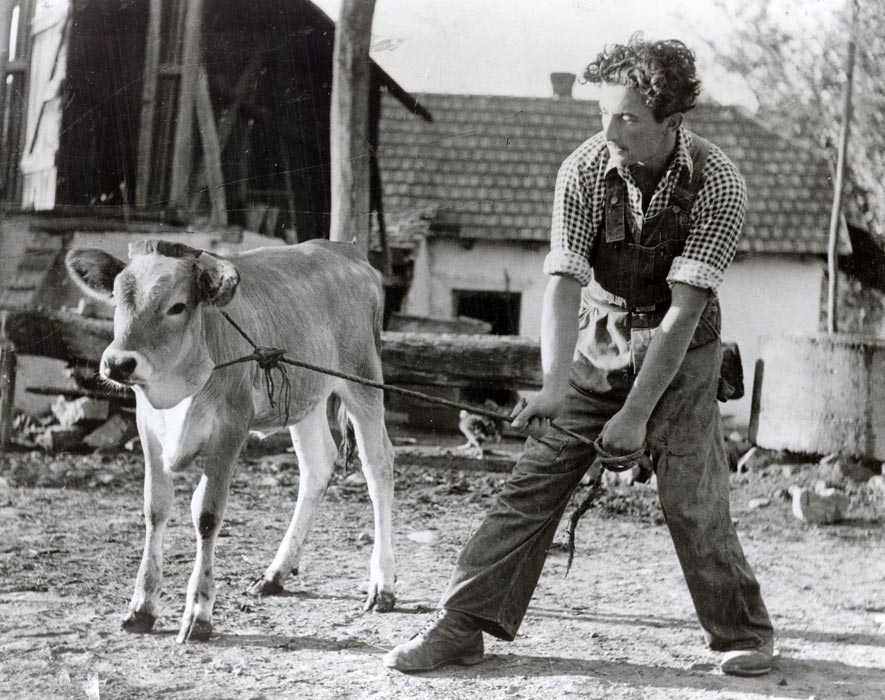
Youngster at a hachshara (pioneer training) camp in Hungary for prospective emigrants to Palestine
In 1947, JDC maintained 49 hachsharot in Hungary, providing agricultural training for almost 6,000 youths.
Hungary, c.1947.
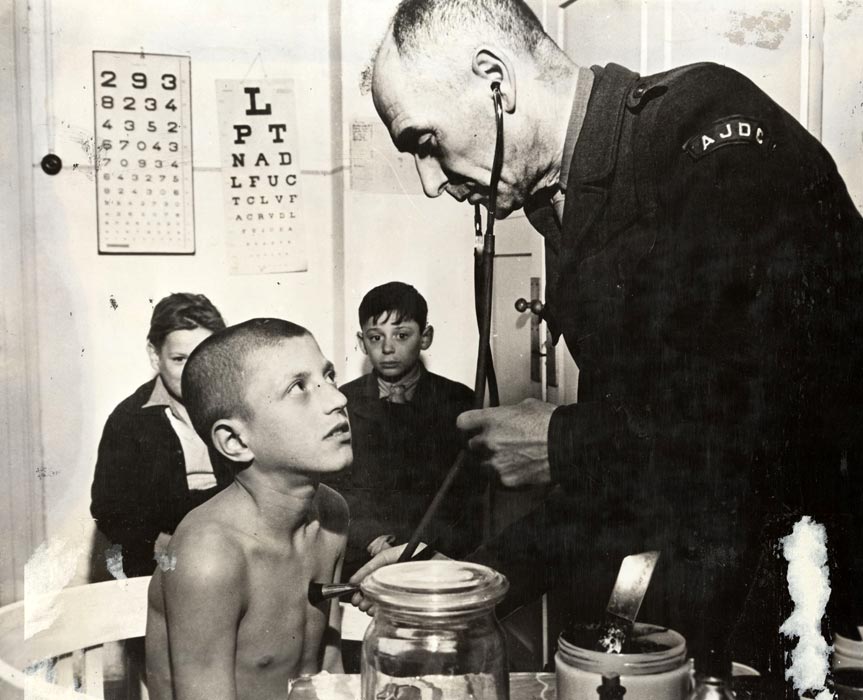
The JDC doctor at the Kloster Indersdorf Children's Center looked after Jewish orphans and slave labor camp survivors
The facility was located in a 700-year-old Catholic monastery near Munich.
Germany, c.1947-48. Photograph: Al Taylor.
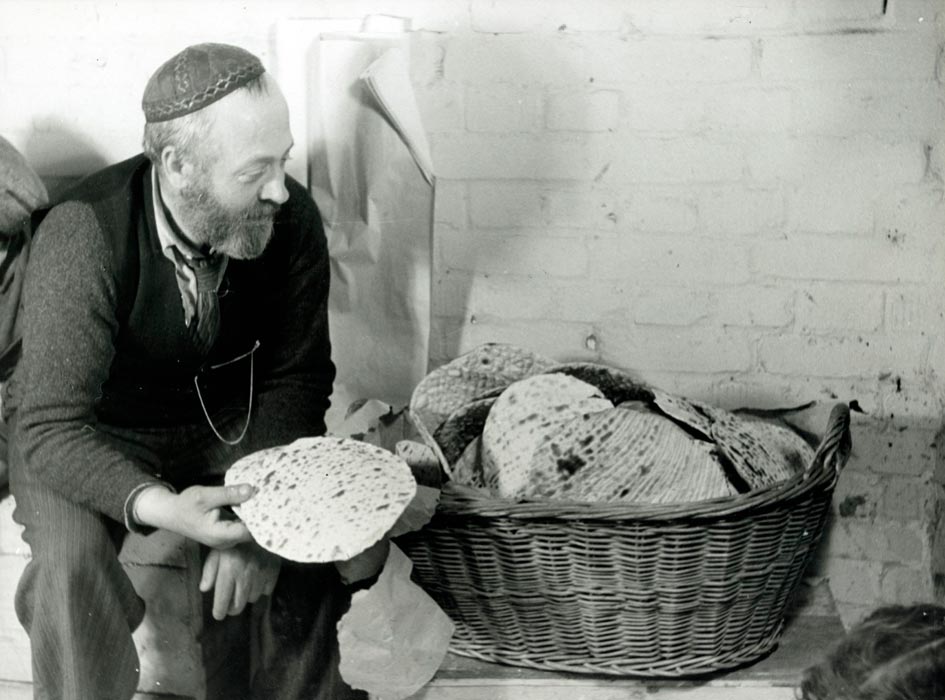
Jewish refugee in Munich with shmurah matzah for Passover
Responding to the religious and cultural needs of the survivors, JDC organized the baking and distribution of millions of pounds of matzah-and flour for the baking of shmurah matzah for Orthodox groups; supplied ritual and holiday articles such as Torah scrolls, tefillin (phylacteries), prayer shawls, shofars, and the like; and printed hundreds of thousands of prayer books, Passover Haggadot, rabbinic works, textbooks, and primers.
Munich, late 1940s.
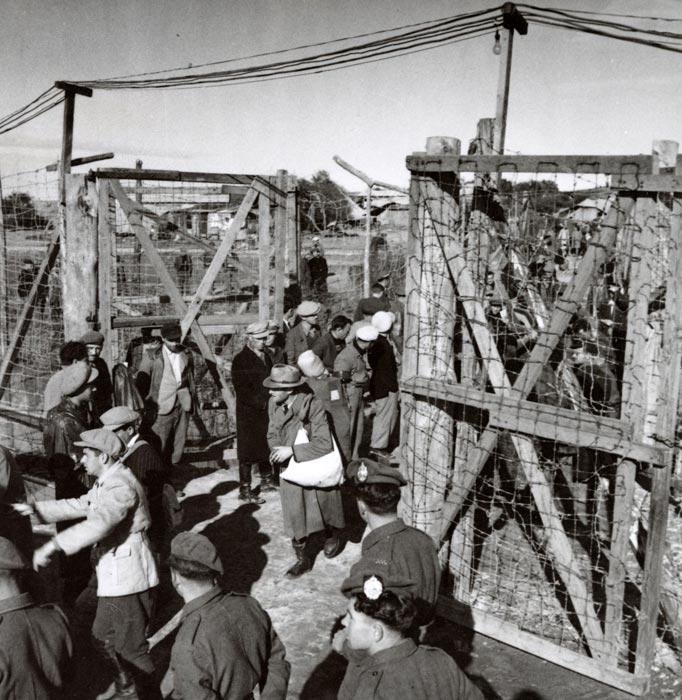
First group of Jewish internees leaving the British detention camp at Xylotymbou, Cyprus, for Palestine
Operation Liberation brought to an end JDC’s Cyprus relief program, which provided supplementary food and clothing, medical and dental care, educational and cultural activities, and vocational training-at a cost of some $2 million- for some 55,000 Jewish refugees who had been denied entry into Palestine.
Cyprus, 1949.
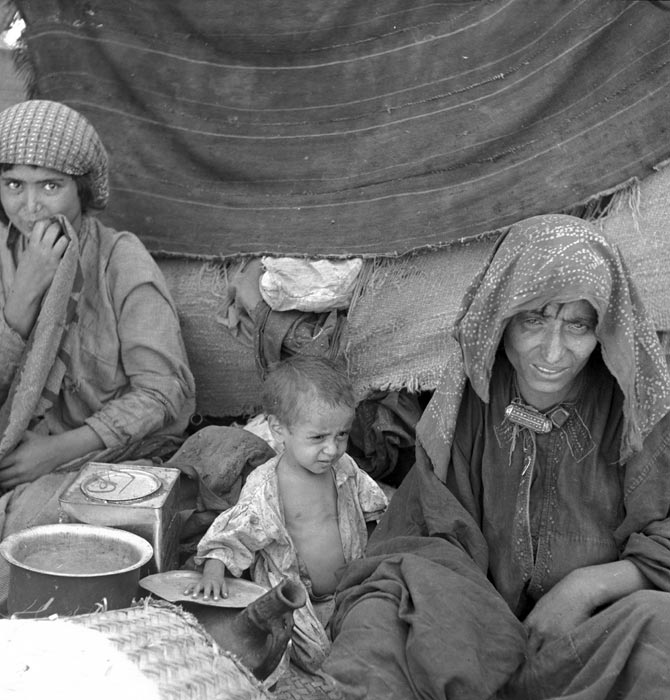
Yemenite family in Aden waiting to depart for Israel through JDC’s Operation Magic Carpet
In the Hashid transit camp in Aden-administered and staffed by JDC in cooperation with the Jewish Agency-medical and social welfare personnel set up one of the most successful medical aid programs of modern times.
Yemen, 1948-49.
Everything Possible: JDC and the Children of the DP Camps
Following World War II, JDC provided critical services to European Jews in the displaced persons (DP) camps established by the Allied Armed Forces. JDC placed special attention on the unique needs of the growing population of children in the camps.
Topic Guides
Galleries
News and Articles
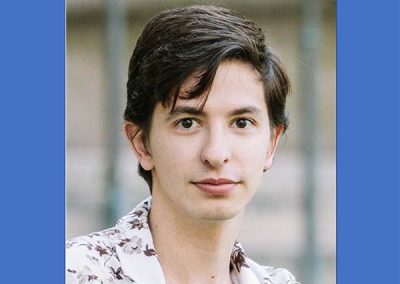
Walter Francis Lectures on “Building Memory: Jewish Communal Reconstruction in Postwar Tunisia, 1945-1967”
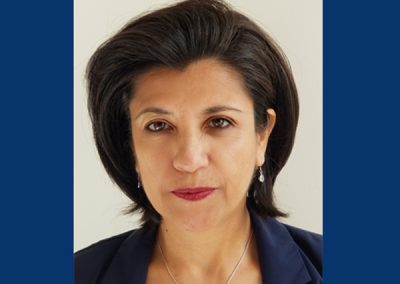
Sandra Gruner-Domić Lectures on Bolivia, a Forgotten Refuge During the Holocaust: Jewish Immigration 1937-1941
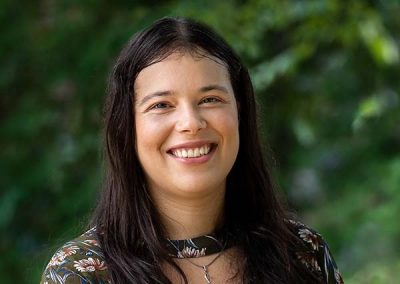
Alexandra Kramen Lectures on the Struggle for Holocaust Justice in the Jewish Displaced Persons Community of Föhrenwald, 1945-1957
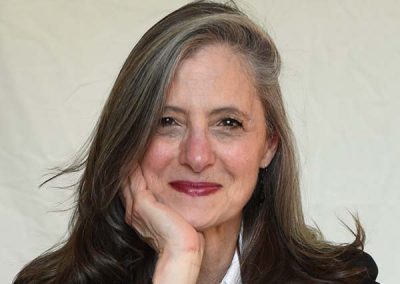
New Book—From Left to Right: Lucy S. Dawidowicz, the New York Intellectuals, and the Politics of Jewish History
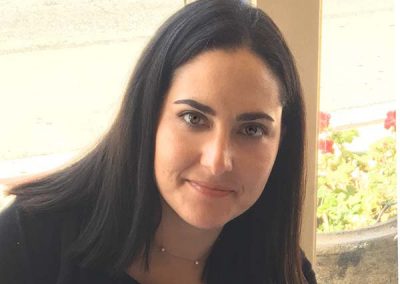
Sari Siegel Lectures on Jewish Survivor-Physicians in Transition: From DP Camp Doctors to Emigrants, 1945-1950
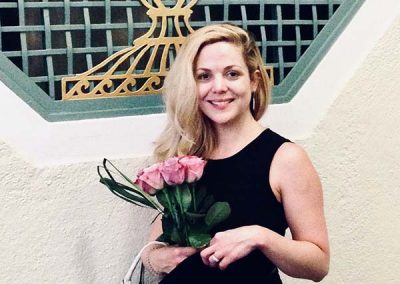
Stacy Veeder Lectures on “The Thread that Binds”: Personal Correspondence and Relief Aid in the Camps of Occupied France, 1940-1944
